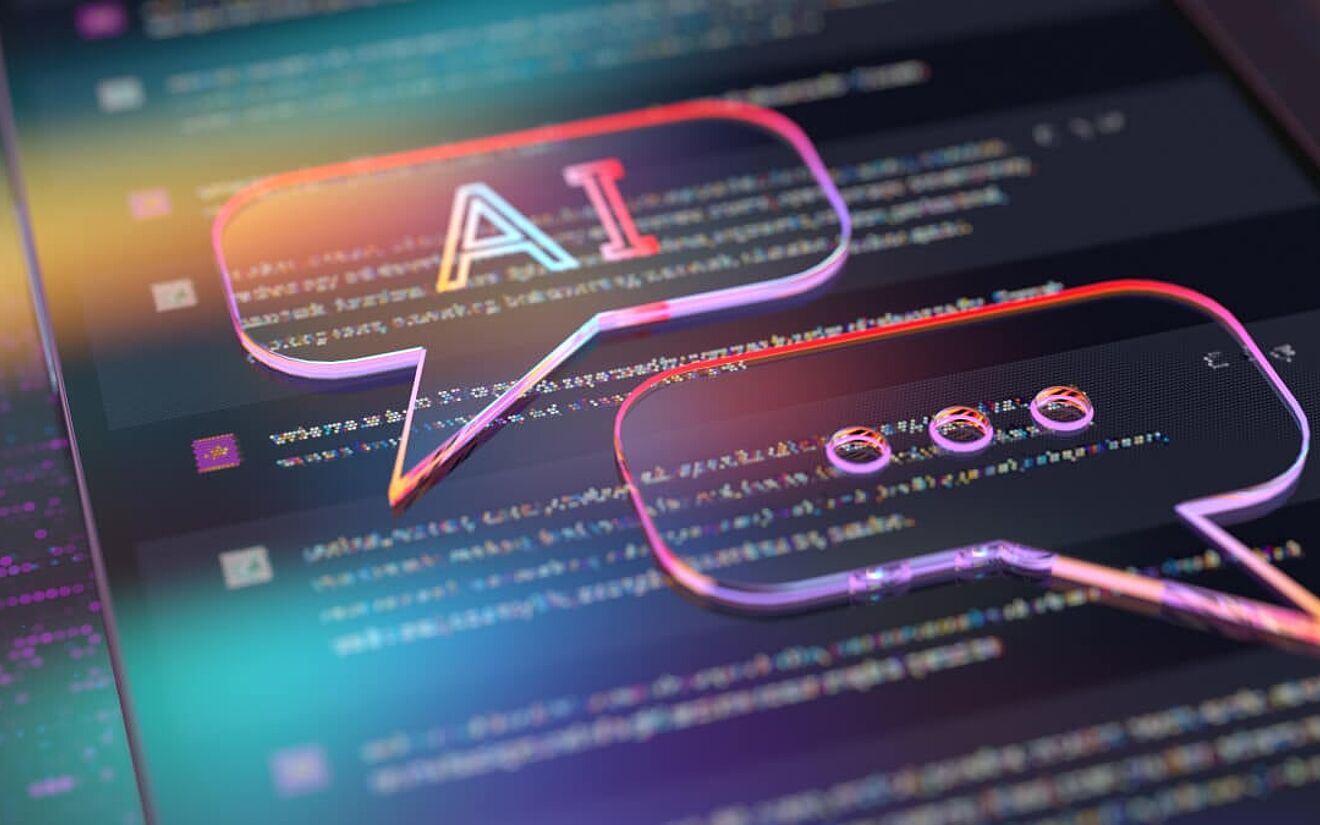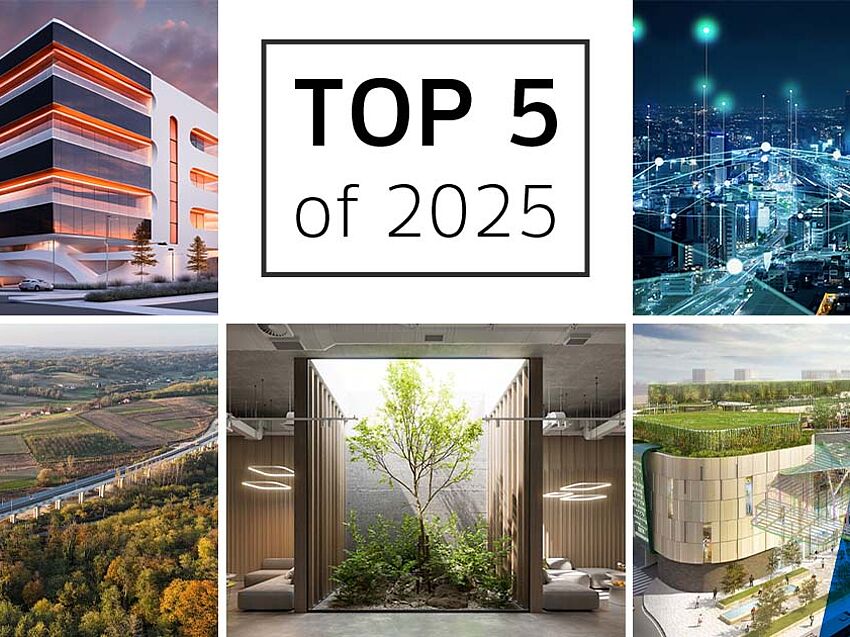As the digital era continues to unfold, the architecture, engineering, and construction (AEC) industry is also undergoing significant transformation. With so many new applications for existing and emerging technologies being developed, the industry is reaching a point where continuously embracing technological advancements is essential. Below, we explore five AEC technology trends that are poised to make a substantial impact in 2024, reshaping how we design, construct, and manage our built environment.
1. Digital Knowledge Management with Generative AI
Generative AI (or GenAI) is revolutionizing the AEC industry by enhancing access to knowledge, streamlining content generation, optimizing design processes, and providing responsive assistance. This novel kind of artificial intelligence will help us to manage vast amounts of project data. It offers insights and solutions in a quality and speed that was previously unattainable, thus pushing the boundaries of architectural and engineering innovation.
For example, GenAI enhances data interoperability and efficient content translation, making information and knowledge more accessible. It also streamlines the creation and management of extensive project information by structuring vast sets of plans, highlighting inconsistencies, and facilitating targeted searches for information. For design optimization, GenAI can leverage data analysis for smarter planning decisions, error reduction, and sustainable design practices. Finally, it can also improve user experiences with predictive modeling and natural language processing, facilitating smoother interactions with advanced software tools. These examples are just a brief glimpse of GenAI’s potential for driving efficiency, creativity, and sustainability in the AEC sector.
For an in-depth look at ALLPLAN’s AI strategy and tools, read our blog about planning and building with AI.
2. Sensor-Based Information Gathering
The integration of sensors throughout the design, construction, and management phases is transforming how buildings are created and maintained. Sensors provide data, enabling more informed decisions, optimizing construction processes, and ensuring efficient and secure building utilization.
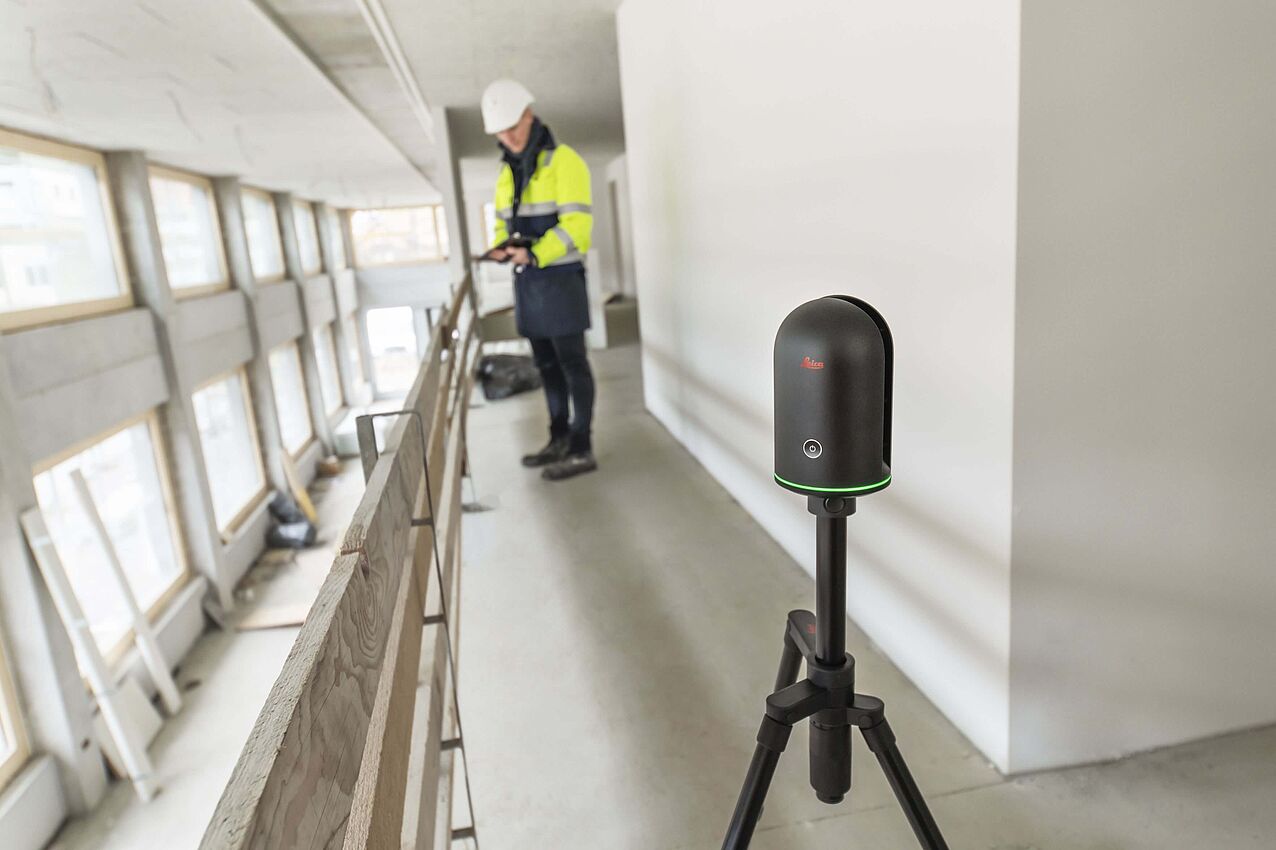
The most obvious application of this technology is for digital asset management, with IoT sensors enabling predictive maintenance and operational optimization by continuously monitoring building performance. Structural Health Monitoring systems (SHM) extend the economic service life of infrastructure structures. This reduces costs and minimizes the ecological footprint. However, they bring value in the design and construction phases as well. During design, sensors like 3D-laser scanners provide accurate and holistic spatial site data, enabling better informed decisions and reducing risks of planning errors. For construction, sensors can optimize processes through real-time monitoring of resources and conditions, improving safety and efficiency. The integration of sensor technology across various stages leads to a more efficient, sustainable, and responsive approach in the architecture, engineering, and construction sectors.
3. Model-Based Communication in the Metaverse
Digital twins and the Metaverse are redefining how communication takes place within the AEC industry. By creating virtual replicas of physical assets, these technologies allow for enhanced collaboration, accurate simulations, and improved project outcomes.
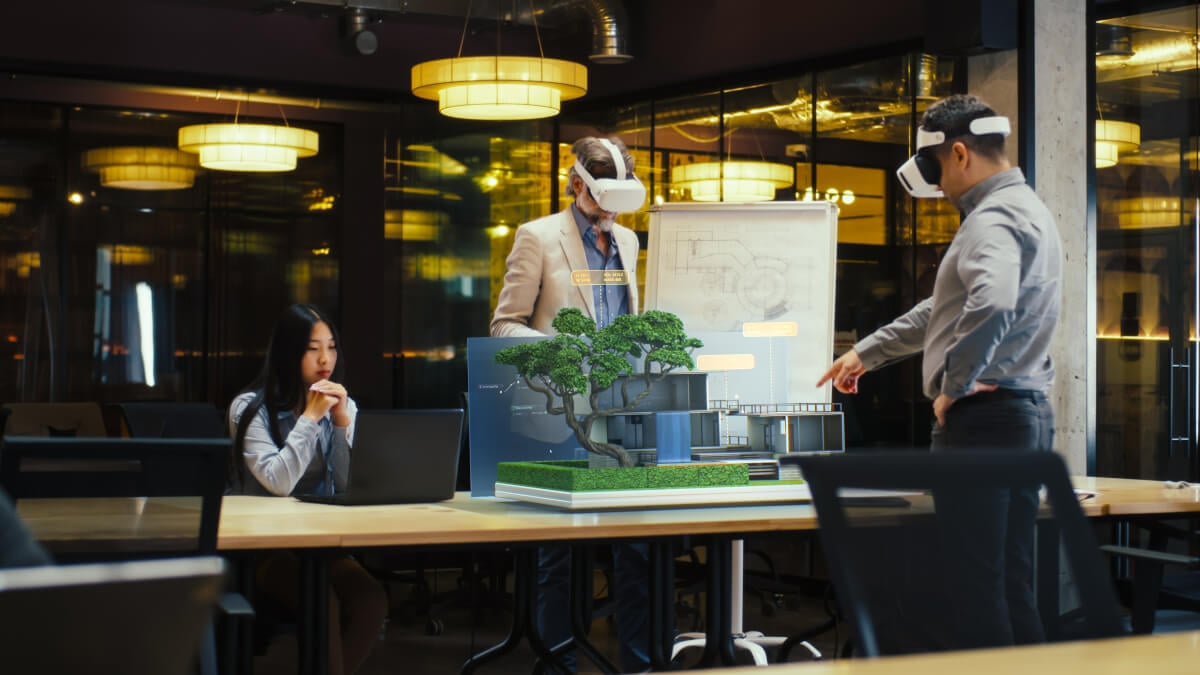
Asset-based digital twins deliver virtual replicas of physical structures with a high depth of information. They serve as the foundational elements for immersive experiences in the Metaverse. Stakeholders are able to interact with them and visualize buildings and infrastructure in a detailed, lifelike manner long before they are built. This integration not only enhances project collaboration and decision-making but also paves the way for innovative design and new business models.
By hosting these comprehensive digital twins in the Metaverse, teams can engage in immersive design and planning sessions in real-time, irrespective of geographical constraints. This brings a whole new dimension to project management and operational planning. Whilst still in the early stages, this synergy of digital twins and the Metaverse signifies a transformative leap in how the AEC industry includes decision makers, clients, and business partners.
4. Robotics and Large-Scale 3D Printing
Robotics and 3D printing are at the forefront of innovation in the AEC sector. These technologies enable the construction of complex structures with precision and efficiency, reducing labor costs, and material waste, while opening new possibilities in design and construction methodologies.
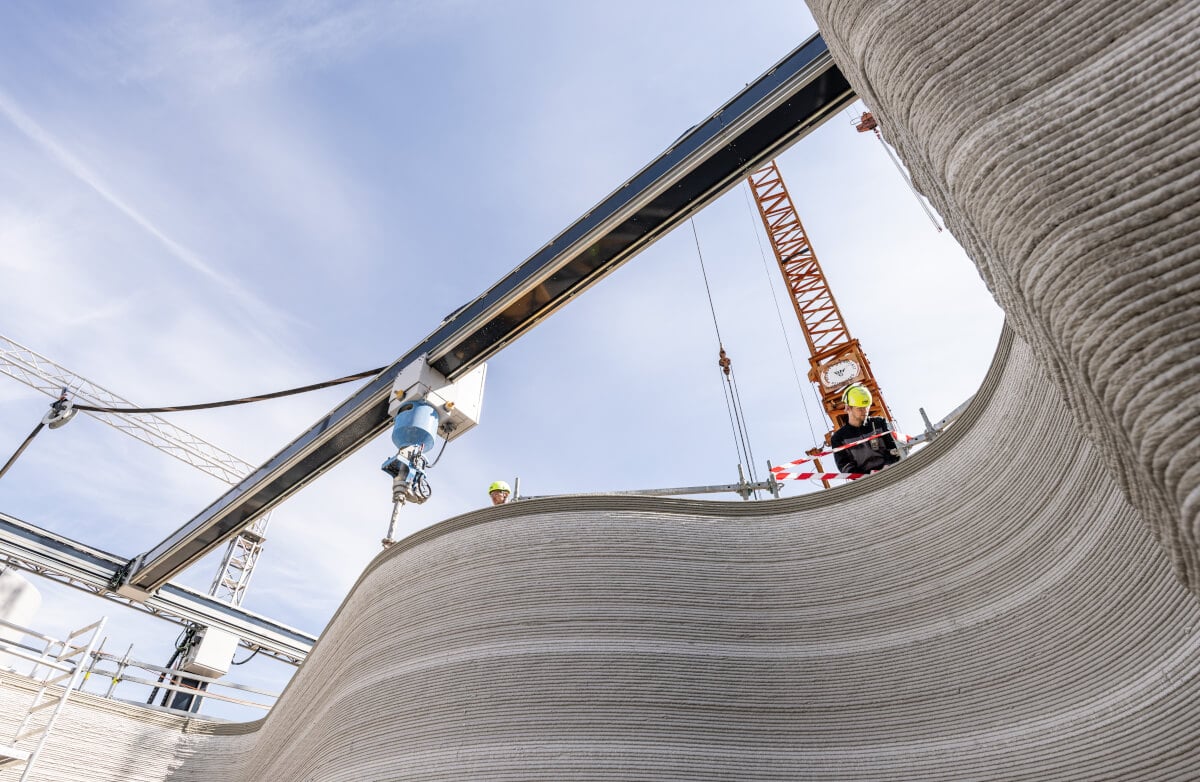
This shift is most evident in prefabrication, where smart fabrication methods – including industrial robots and autonomous transportation systems – are revolutionizing production and logistics processes. On construction sites, additive manufacturing systems are now capable of printing entire houses, and increasingly sophisticated building machines are replacing tasks traditionally performed by construction workers. In the operation phase, autonomous mobile systems are being introduced for building maintenance and cleaning, ensuring safety, value, and quality of buildings.
5. Digitally Supported Sustainability
The shift towards sustainable and green building will continue in 2024, supported by digital tools. Smart building technologies, advanced construction materials, and modern methods of construction (MMC) can all contribute to a lower carbon footprint, both during construction and operation.
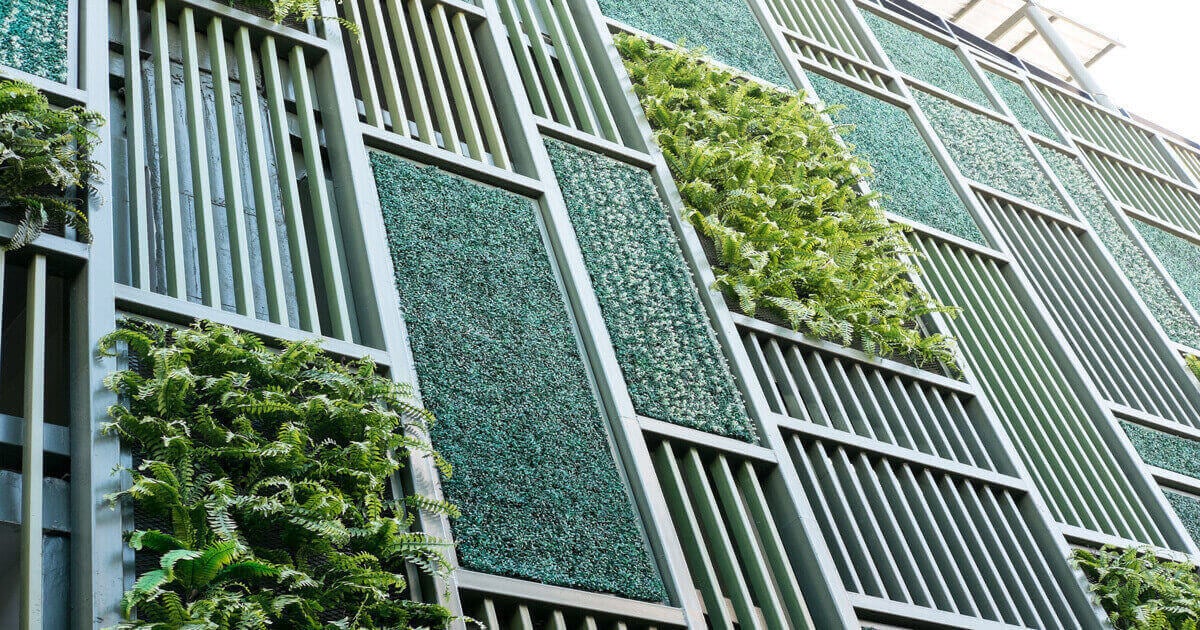
Smart building systems, embedded within building designs, utilize sensors, AI, and cloud-based platforms to optimize energy usage, regulate building climates efficiently, and monitor water usage, thereby contributing to significant energy savings and reducing the environmental footprint.
Another aspect is the development of eco-friendly construction systems that are not only energy-efficient but also contribute to the building’s overall sustainability. BIM software allows for precise planning and resource optimization, reducing waste during construction and enabling reuse at the end of the life cycle. Similarly, MMC approaches like multimaterial composites can be modeled accurately to minimize both waste and construction times, resulting in fewer emissions during the construction phase.
Today’s Tech, Tomorrow’s Buildings
As we look ahead, these five trends show how professionals can not only enhance efficiency and creativity but also contribute to a more sustainable and resilient built environment. 2024 promises to be an exciting journey of innovation and progress.
